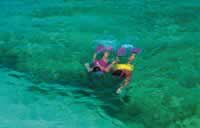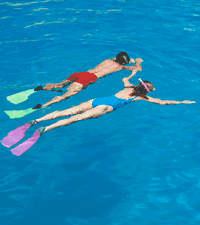


|
The Bahamas
Within 50 miles of Florida's coastline
lies the entrance to the Bahamas, a 700 mile-long archipelago
with over 700 subtropical islands, cays and reefs covering
over 100,000 square miles of the floor of the Atlantic Ocean.
The actual land area of the Bahamas is approximately 5,400
square miles. For the most part
this extensive chain of islands. mostly uninhabited, are low
and rocky, surrounded by coral reefs and sandbanks through
and around which channels lead into the most perfect harbors
and coves imaginable. As spectacular as the Bahamas are for
the yachtsman the unhurried and serene lifestyle of the Bahamian
people, particularly on the out islands, is the perfect antidote
for everyone to the hectic lifestyle found in most industrial
countries. The Bahamas became an
independent nation on July 10, 1973 after 300 years as a British
Colony. Along with this dramatic change in government came
the other problems associated with emerging third world countries.
The government now recognizes their country's most valuable
asset, the crystal clear water, which ranges in color from
a translucent midnight blue off the soundings to the palest
of blues and bottle greens close inshore. Then there are the
beaches, remote and dazzling white or pale pink, with coral
sand as fine as powder. The bordering coconut palms and scrub
serve merely to emphasize the brilliance of the water.
With this recognition comes utilization
of these resources through development. The government is
now pro-development and is designing programs to attract foreign
investment as well as private investment from within the country.
This approach is a departure from the past and is an encouraging
sign that well conceived projects will now flourish.

|







